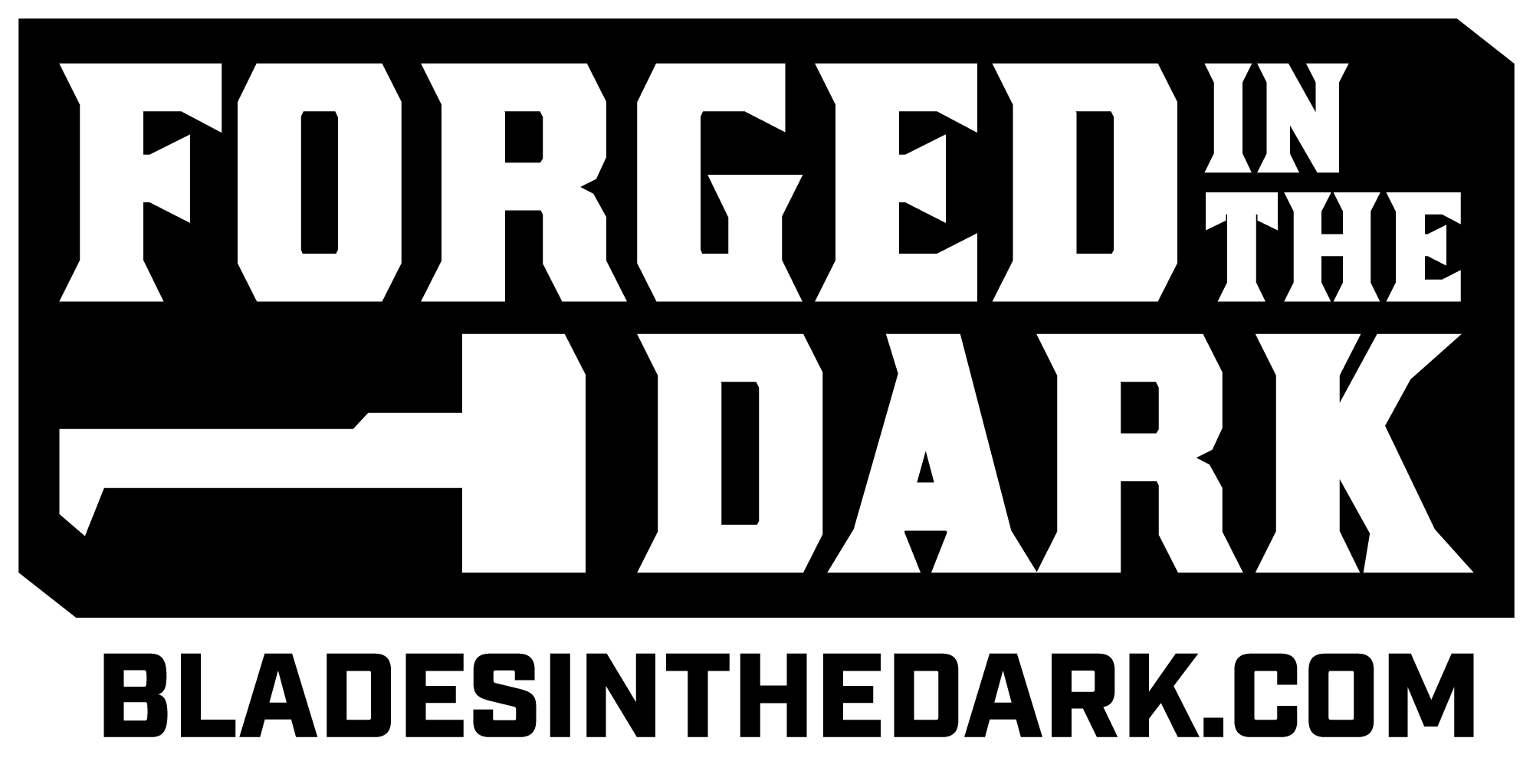Planning & Engagement 
Your crew spends time planning each mission. They huddle around a conference table in their field office, looking at scrawled maps, whispering plots and schemes, bickering about the best approach, lamenting the dangers ahead, and trying to figure out how it all hangs together.

But you, the players, don’t have to do the nitty-gritty planning. The characters take care of that, off-screen. All you have to do is choose what type of plan the characters have already made. There’s no need to sweat all the little details and try to cover every eventuality ahead of time, because the engagement roll ultimately determines how much trouble you’re in when the plan is put in motion. No plan is ever perfect. You can’t account for everything. This system assumes that there’s always some unknown factors and trouble—major or minor—in every operation; you just have to make the best of it.
Secondary missions are a little different, in that we assume the planning and action occur off-screen. We skip the planning and just use the engagement roll to determine the outcome of the mission.
There are six different plans, each with a missing detail you need to provide (see the list below). To “plan a mission,” simply choose the plan and supply the detail. Then the GM will cut to the action as the first moments of the operation unfold.
- Assault — Do violence to a target. Detail: The point of attack.
- Deception — Lure, trick, or manipulate. Detail: The method of deception.
- Stealth — Trespass unseen. Detail: The point of infiltration.
- Occult— Engage a supernatural power. Detail: The arcane method.
- Social — Negotiate, bargain, or persuade. Detail: The social connection.
- Transport — Carry cargo or people through danger. Detail: The route.
The Detail
When you choose a plan, you provide a missing detail, like the point of attack, social connection, etc. If you don’t know the detail, the Director can spend intel to ask the GM questions.
Remember, the agent in charge has final say on the plan and the detail.
Item Loadouts
After the plan and detail are in place, each player chooses their character’s load. This indicates how much stuff they’re carrying on the operation. They don’t have to select individual items—just the maximum amount they’ll have access to during the action.
Engagement Roll
Once the players choose a plan and provide its detail, the GM cuts to the action—describing the scene as the crew starts the operation and encounters their first obstacle. But how is this established? The way the GM describes the starting situation can have a huge impact on how simple or troublesome the operation turns out to be. Rather than expecting the GM to simply “get it right” each time, we use a dice roll instead. This is the engagement roll.
Personnel assembles the dice pool for the engagement roll. For a primary mission, the agent in charge makes the actual roll.
For a secondary mission, the Director makes the engagement roll, which determines the result of the mission.
The engagement roll assumes that the PCs are approaching the target as intelligently as they can, given the plan and detail they provided, so we don’t need to play out tentative probing maneuvers, special precautions, or other ponderous non-action. The engagement roll covers all of that. The PCs are already in action, facing the first obstacle—up on the rooftop, picking the lock on the window; kicking down the door of the local mafia; maneuvering to speak with a government official at the masquerade party; etc.
Don’t make the engagement roll and then describe the PCs approaching the target. It’s the approach that the engagement roll resolves. Cut to the action that results because of that initial approach—to the first serious obstacle in their path.
The first obstacles at the old museum is the modern locks and security perimeter. The engagement roll puts us on the roof outside a window, as the PCs attempt to silently and carefully break into the attic.
The PCs have kicked down the door and swarmed into the front room of the mafia headquarters, weapons flashing, into the swirl of the melee with the first guards.
The PCs have socialized politely at the party, maneuvering into position to have a private word with a powerful official. As a group of diplomats leave his side, the PCs step up and engage him in conversation.
If the players want to include a special preparation or clever setup, they can do so with flashbacks during the mission. This takes some getting used to. Players may balk at first, worried that you’re skipping over important things that they want to do. But jumping straight into the action of the mission is much more effective once you get used to it. When they see the situation they’re in, their “planning” in flashbacks will be focused and useful, rather than merely speculations on circumstances and events that might not even happen.
Primary Mission Outcomes
For the primary mission, the outcome of the engagement roll determines the position for the PCs’ initial actions when we jump to the action. A 1-3 means a desperate position. A 4/5 is a risky position. A 6 yields a controlled position. And a critical carries the action beyond the initial obstacle, deeper into the progress of the mission.
No matter how outmatched you are, a desperate position is the worst thing that can result from the plan + detail + engagement process. It’s designed this way so the planning process matters, but it doesn’t call for lots of optimization or nitpicking. Even if you’re reckless and just dive in and take your chances, you can’t get too badly burned. Plus, you might even want those desperate rolls to generate more xp for the PCs, which helps to bootstrap starting characters into advancement.
When you describe the situation after the roll, use the details of the target to paint a picture of the PCs’ position. How might the strange, occult creature present a desperate position for burglars? How might the violent and ruthless mafia goons present a risky threat to a squad of muscle? How might the vain and pompous official present a controlled opportunity for a manipulative mastermind? Use this opportunity to show how the PCs’ enemies are dangerous and capable—don’t characterize a bad engagement roll as a failure by the PCs, or they won’t trust the technique in the future. Sure, things are starting out desperate here against the creepy henchmen, but you’re just the type of characters who are daring enough to take them on. Let’s get to it.
Secondary Mission Outcomes
- Critical — you succeed at the mission, can promote a crew member, and all participants now trust the agent in charge.
- 6 — you succeed at the mission, all agents take level 1 harm.
- 4/5 — Choose: fail the mission and all crew members return unharmed or you can succeed, two squad members die, and all agents take level 2 harm.
- 1-3 — You fail the mission, lose three squad members or one agent, and all agents take level 3 harm.
Take a few minutes to discuss the mission. What went right? What went wrong? What kind of opposition did the team face? These details help establish what harm the agents take. If any crew members died, ask someone what they remember most about them (they should make something up).
Details like this help influence how the story unfolds, and helps to develops the personality and essential nature of the crew.
How long does it last?
The engagement roll determines the starting position for the PCs’ actions. How long does that hold? Does the situation stay desperate? No. Once the initial actions have been resolved, you follow the normal process for establishing position for the rest of the rolls during the score. The engagement roll is a quick short-hand to kick things off and get the action started—it doesn’t have any impact after that.
Linked Plans
Sometimes an operation seems to call for a couple of plans linked together. A common scenario is a team that wants a two-pronged approach. “You create a diversion at the pub, and when they send the guards over there, we’ll break into the back of the vault.” There are two ways to handle this.
- The diversion is a setup maneuver that a team member performs as part of the plan. A successful setup maneuver can improve position for teammates (possibly offsetting a bad engagement roll) or give increased effect. An unsuccessful setup maneuver might cause trouble for the second part of the plan—an easy consequence is to give the engagement roll -1d. If it makes sense, the team member who performed the setup can drift back into the main operation and join the team later so they don’t have to sit out and wait.
- The diversion is its own plan, engagement, and mission, whose outcome creates the opportunity for a future plan. Use this option when the first part of the plan is required for the next part to happen at all. For example, you might execute a stealth plan to steal an artifact from the Museum of the Ancients, then later use that artifact in an social plan to gain access to a private collection. In this case, you go into downtime after the first part of the plan, as normal.
Either approach is fine. It’s usually a question of interest. Is the linked plan idea interesting enough on its own to play out moment by moment? Is it required for the second plan to make sense? If so, make it a separate mission. If not, just use a setup maneuver.
